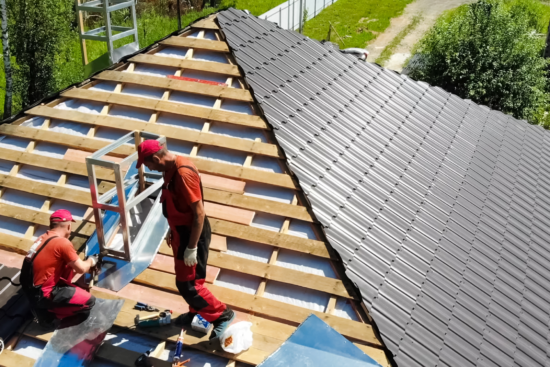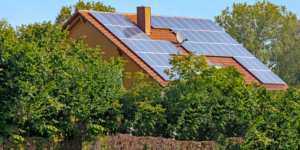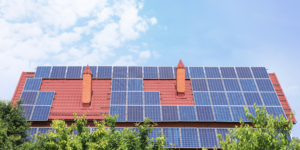© All Rights Reserved | Roof Replacement and Repair - Zaman Roofing LLC. | Website Design & CT SEO Powered by High Point SEO CT
Exploring Sustainable Roofing Options: Eco-Friendly Choices for Your Home
Category: Roofing • November 30, 2023
We explore home sustainability roofing choices! Eco-friendly building and renovation options are more significant in today’s eco-conscious world. Many ignore the roof, a key part of any property. Sustainable roofing materials help the environment and benefit you and your property.
The Importance of Sustainable Roofing
Sustainable roofing is crucial. With climate change and environmental considerations in mind, we must make conscious house choices. A sustainable roof reduces carbon emissions and boosts energy efficiency. Energy conservation is a major benefit of sustainable roofing. These roofing materials reflect sunlight and absorb less heat, keeping your home cooler in summer and decreasing air conditioning needs.
Another factor is water conservation. Sustainable roofs efficiently capture rainwater for gardening and toilet flushing. This minimizes water demand and utility bills. Sustainable roofs also reduce the urban heat island effect, which makes cities warmer than rural regions owing to human activity and lack of green space.
Choose lighter-colored reflecting materials or create rooftop gardens to reduce this issue. Sustainable roofs are environmentally friendly and may boost home value. An eco-friendly roof may attract purchasers if you sell your property in the future. Many homeowners today value sustainability when buying. Sustainable roofing does more than only cut energy use and landfill waste; it also improves property value and combats urban heat islands. Why choose a standard roof when you can go green? Let’s explore amazing possibilities that will change your home and planet!
Types of Sustainable Roofing Materials
There are many sustainable roofing alternatives that decrease energy expenses and environmental effects. Here are some common eco-friendly roofing materials:
- Metal Roofing: Metal roofs are sturdy and long-lasting, making them environmentally friendly. They can be recycled after use because they are usually composed of aluminum or steel. Sunlight reflects off metal roofs, cooling your home.
- Solar Shingles: Solar shingles mix renewable energy with regular roofing. These shingles generate electricity from sunlight with photovoltaic cells. Solar shingles may cost more upfront, but they can lower your grid power use and save you money over time.
- Cool Roofs: Cool roofs reflect more sunlight than dark roofs, minimizing heat transfer in hot weather. They use reflecting coatings or light-colored materials like white membranes or tiles.
- Recycled Rubber Roofing: Made from recycled tires, rubber roofing is durable and insulating while reducing landfill trash. It withstands harsh weather and water damage.
- Green Roofs: Covering a roof with flora protects it from high temperatures, improves air quality, and provides wildlife habitat. They reduce stormwater runoff by absorbing rainwater.
For a classic, eco-friendly roof, select wood shakes/shingles from sustainably managed forests recognized by groups like Forest Stewardship Council (FSC). Careful installation might extend their lifespan.
Benefits of Choosing Eco-Friendly Roofing Options
Green home improvements are excellent for the environment and your wallet. You may make a big difference by choosing sustainable roofing.
Energy efficiency is a fundamental benefit of eco-friendly roofing materials. Summer cooling expenditures are lower with sustainable roofs because they reflect more sunshine and absorb less heat.
Eco-friendly roofing improves indoor air quality. When heated, traditional asphalt shingles produce hazardous compounds. The environment is healthier with sustainable resources like recycled rubber or wood.
Sustainable roofing also boosts property value. Potential purchasers are increasingly interested in green buildings, especially eco-friendly roofing, as homeowners become more environmentally conscious.
Choose an eco-friendly roof to lower your carbon footprint and fight climate change. Building your roof with renewable or recycled materials helps create a greener future for future generations.
Considerations When Choosing a Sustainable Roof
There are several factors to consider while choosing a sustainable roof for your home. Your climate comes first. It’s important to choose a roofing material that can endure the weather and maximize energy efficiency in your environment.
Cost is another consideration when choosing a sustainable roof. Eco-friendly roofing materials may cost more upfront but can save money over time due to energy efficiency and less maintenance.
When choosing a sustainable roof, consider your home’s appearance. You want something that matches the architecture, improves curb appeal, and is eco-friendly.
Consider local roofing material limits. Before choosing a roof sustainability standard, check your local regulations.
You can choose a sustainable roof that fulfills your environmental aims and homeowner demands by considering these factors.
Top Sustainable Roofing Options for Your Home: Pros and Cons
Many eco-friendly roofing materials are available for your property. Before choosing, consider the benefits and downsides of each material.
Popular roofing materials include metal. Durable metal roofs can endure 50 years or more with proper maintenance. The lightweight design reduces stress on your home’s structure. Metal roofs reflect sunlight, keeping your home cooler in summer and lowering energy expenditures.
For a natural roof, use cedar shakes or shingles. Cedar is a sustainable resource with natural insulation that can save household energy use. Cedar roofs need frequent maintenance to prevent moss and damage.
For a modern look, green roofs are inventive. Living flora grows on waterproofing membranes and soil or substrate on green roofs. Insulation, rainwater runoff reduction, and urban air quality are their benefits.
Recycled rubber shingles are a greener roofing option than asphalt. These durable, insulated tiles are made from recycled tires or other rubber items.
How to Make the Switch to a Sustainable Roof
Switching to a sustainable roof reduces your environmental effects and saves money. Just how do you make this change? Steps to transition to a sustainable roof:
- Learn and research: Research market-available sustainable roofing materials. Discover their merits, downsides, durability, and maintenance needs.
- Determine your needs: Consider climate, money, aesthetics, and local restrictions when choosing a sustainable roofing alternative.
- Talk to specialists: Ask roofing contractors or sustainability experts for advice on choosing the correct material for your home. They may evaluate your roof’s condition and suggest choices based on size, slope, and other considerations.
- Compare rates and services from numerous trustworthy contractors after narrowing your choices.
- Plan installation: Schedule installation for weather conditions that will help the new roofing material stick.
- Dispose responsibly: If you’re replacing an old roof with a greener one, recycle or repurpose old materials.
Remember that switching to a sustainable roof costs more but helps the environment and your cash in the long run!





